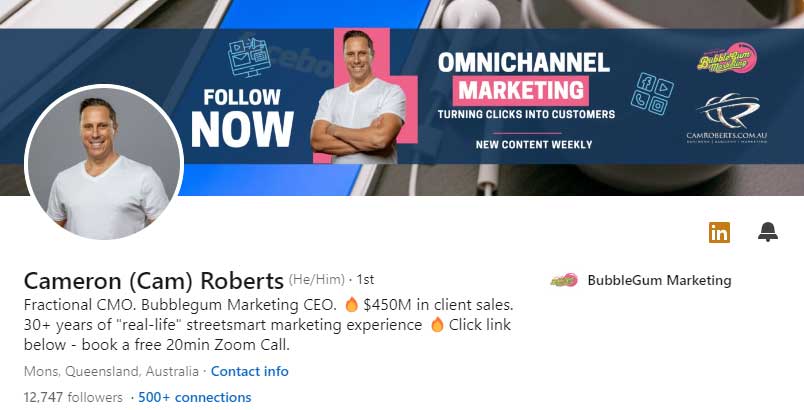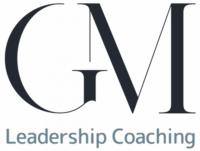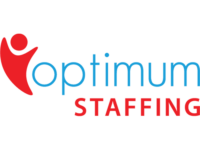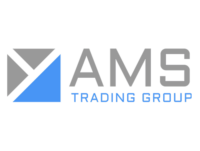What Is Search Advertising and How Does It Work
By Cameron Roberts – Founder & CEO of Bubblegum Marketing,
Posted On February 20, 2025
In today’s fast-paced digital world, businesses are constantly seeking effective ways to reach their target audience. One powerful tool in the digital marketing arsenal is search advertising. But what exactly is search advertising, and how does it work? In this article, we’ll break down the essentials of search advertising, making it easy to understand and implement for your business.
Understanding Search Advertising
Search advertising, also known as paid search ads, is a form of online advertising where businesses pay to have their ads displayed on search engine results pages (SERPs). These ads typically appear at the top or bottom of the search results, marked as “Ad” to distinguish them from organic results. The goal is to capture the attention of users who are actively searching for products or services related to the advertiser’s offerings.
The Change in Search Advertising
Search advertising has changed a lot over time. It started with simple text ads on search engines. These ads helped people find products or services easily.
As technology improved, ads became more advanced. They started using data to show users what they might want. This made ads more relevant and helpful. Modern search advertising encompasses images, videos, and other Mixed media elements. It targets specific groups of people based on their interests. This evolution has made advertising more effective and engaging for users.
Main People in Search Advertising
In search advertising, there are important roles. Here are the key players:
- Advertisers: These are businesses or individuals who want to promote their products or services. They design advertisements and determine their placement.
- Search Engines: Platforms such as Google or Bing that display advertisements in response to user search queries. They manage the ad space and deliver the ads to users.
- Users: These are the people who search for information online. They see the ads when they search and may click on them.
- Publishers: Websites that host and present advertisements to their audiences. They collaborate with search engines to display advertisements on their platforms.
- Agencies: Companies that help advertisers create and manage their ads. They have expertise in making ads effective.
Each of these players works together to make search advertising successful.
The Role of Search Engines
Search engines are the backbone of search advertising. They provide the platform where ads are displayed and serve as the Middleman between advertisers and potential customers. Search engines use complex algorithms to match ads with user queries, ensuring that ads are relevant to what users are searching for. This relevance is crucial for both the user’s experience and the advertiser’s success, as it increases the likelihood of clicks and conversions.

✅ Stay Updated on Instagram – Follow on Instagram
Understanding How Search Advertising Works
Search advertising operates on a pay-per-click (PPC) model, where advertisers pay only when users click on their ads. The cost per click (CPC) can vary depending on factors such as keyword competition and ad quality. While the mechanics are similar across most search engines, Google, as the most widely used platform, employs a modified second-price auction system to determine ad rankings and costs on its search engine results pages (SERPs). In this system, the highest bidder doesn’t pay their full bid amount but instead pays just enough to surpass the next highest bidder. This approach promotes competitive bidding while ensuring that users see relevant, high-quality ads, creating a win-win scenario for both advertisers and searchers.
The Importance of Keywords
Keywords are very important in search advertising. Advertisers pick keywords that customers might use to find their products or services. For example, a bakery may select keywords such as “fresh bread near me” or “order cakes online.” To pick the right keywords, it’s important to know the target audience and think about how they search. Tools like Google Keyword Planner can help find valuable keywords that fit business goals.
Understanding the Ad Auction Process
When a user types a search, an auction starts to decide which ads show up and their order. This auction looks at the bid amount and the quality of the ads. Unlike regular auctions, the highest bidder doesn’t always win. The process makes sure ads are relevant and good quality, helping users and advertisers. Advertisers must balance their bids with the quality and relevance of their ads to get the best spot.
Ad Rank and Its Components
Ad Rank is a score that determines the position of an ad on the search results page. Influenced by the bid amount, ad quality, and expected impact of ad extensions (additional links, phone numbers, etc.). A higher Ad Rank can lead to better ad positions and lower costs. Improving Ad Rank involves optimizing ad copy, using relevant keywords, and enhancing user experience on landing pages. Ad extensions can also boost Ad Rank by providing additional information and increasing ad relevance.

The Benefits of Search Advertising
Search advertising offers several advantages that make it a popular choice for businesses looking to enhance their online presence.
Precise Targeting Capabilities
One of the most significant benefits of search advertising is its ability to target specific audiences. Advertisers can tailor their ads based on factors like location, device type, and even the time of day. This precision ensures that ads are shown to users who are most likely to be interested in the offerings. Targeting options have become increasingly sophisticated, allowing advertisers to reach niche markets with personalized messages. This level of targeting enhances the effectiveness of campaigns and maximizes return on investment.
Achieving Immediate Visibility
Unlike organic search results, which can take time to climb the ranks, search ads provide immediate visibility on SERPs. This is particularly advantageous for new businesses or those launching a new product, as it allows them to quickly gain exposure and attract potential customers. Immediate visibility helps in capturing market share and establishing a brand presence in competitive environments. It also offers businesses the flexibility to respond quickly to market changes or promotional opportunities.
Access to Measurable Results and Insights
Search advertising platforms, such as Google Ads, offer robust analytics tools that allow advertisers to track the performance of their campaigns. Metrics like click-through rate (CTR), conversion rate, and return on ad spend (ROAS) provide valuable insights into how well the ads are performing, enabling businesses to make data-driven decisions. These insights empower businesses to optimize their strategies, allocate budgets effectively, and Regularly improve their advertising efforts. The ability to measure results in real time ensures that campaigns remain agile and responsive to changing market dynamics.

Crafting Effective Paid Search Ads
Creating compelling search ads requires a strategic approach. Here are some key elements to consider:
Designing Compelling Headlines
The headline is the first thing users see, so it’s crucial to make it attention-grabbing and relevant. Including keywords in the headline can improve ad relevance and increase the likelihood of clicks. Crafting effective headlines involves understanding the user’s intent and addressing their needs or pain points. A well-written headline should entice users to learn more and explore the offer further. Testing different headline variations can help identify what resonates best with the target audience.
Developing a Clear Call-to-Action
A strong call-to-action (CTA) encourages users to take the desired action, whether it’s visiting a website, making a purchase, or signing up for a newsletter. Shop Now,” “Learn More,” or “Get Started” can be highly effective in encouraging user engagement. The CTA should be prominently placed and aligned with the overall ad message. It should create a sense of urgency or offer a clear benefit to compel users to take action. Experimenting with different CTAs and analyzing their performance can lead to improved conversion rates.
✅ Connect with Cam on LinkedIn
Ensuring Relevant Landing Pages
The landing page is the destination users reach after clicking an advertisement. It’s important that this page matches the ad’s message and offers a good experience. A good landing page can help more people take action. Important parts of a good landing page are a clear message, easy navigation, and an attractive design. The page should load fast and work well on mobile devices. Keeping the landing page updated and testing it often can help it stay effective and relevant.

Setting Up a PPC Marketing Campaign
Now that we’ve covered the basics, let’s walk through the steps of setting up a PPC marketing campaign.
Step 1: Define Your Goals and Objectives
Before diving into campaign creation, it’s essential to establish clear objectives. Are you looking to drive website traffic, increase sales, or boost brand awareness? Defining your goals will guide your campaign strategy. Having clear objectives helps in measuring success and determining the effectiveness of the campaign. It also ensures that all efforts are aligned with the overall business strategy and marketing goals.
Step 2: Conduct Comprehensive Keyword Research
Keyword research is an important step to find the words and phrases your audience uses. Tools like Google Keyword Planner can help you find useful keywords that many people search for but have low competition. It is essential to understand what people mean when they use these keywords. Long-tail keywords are more specific and often less competitive, which can lead to better results and attract better leads. Keeping your keyword list up to date will help your campaign stay relevant and competitive.
Step 3: Create Well-Organized Ad Groups
Group your keywords into themed ad categories. Each ad group should have related keywords and matching ads. This keeps everything relevant and improves how well your ads perform. Make sure each ad group is focused so the ads relate closely to the keywords and what users search for. This can raise the quality score of your ads, which helps them show up better and cost less. Regularly check and update your ad groups to keep them effective.
Step 4: Write Engaging and Persuasive Ad Copy
Writing good ad copy is important to grab people’s attention. Ensure your messages are concise and persuasive. Show the benefits of what you offer and include a strong call to action. Your ad copy should connect with your audience and meet their needs. Using feelings or stories can make the ad more appealing. Test various copies to determine which one elicits the best response.
Step 5: Set Your Budget and Bids Strategically
Establish your daily budget and specify the maximum amount you are prepared to pay for each click. You need to balance being competitive with managing costs. Having a realistic budget helps your campaign run well without spending too much. Smart bidding means looking at your competition, knowing what clicks are worth, and changing your bids based on results. Review and adjust your budget and bids regularly to get the most out of your investment.
Step 6: Monitor, Analyze, and Optimize Constantly
Once your campaign is live, regularly monitor its performance. Use analytics to identify areas for improvement, such as adjusting bids, refining ad copy, or testing new keywords. Continuous optimization is key to maximizing your campaign’s success. Monitoring involves tracking key performance indicators (KPIs) and analyzing trends to understand what drives results. Optimization requires a proactive approach, experimenting with new strategies, and making data-driven decisions to enhance campaign performance and achieve desired outcomes.
Conclusion: Unlocking Growth with Search Advertising
Search advertising is a powerful way for businesses to increase visibility, reach the right audience, and drive conversions. When executed strategically, it can significantly enhance your digital marketing efforts and generate measurable results.
To make the most of search advertising, businesses should focus on crafting compelling ads, selecting the right keywords, and continuously refining their campaigns based on performance data. By doing so, you can improve engagement, maximize ROI, and stay ahead of the competition.
Success in search advertising doesn’t happen overnight—it requires ongoing optimization and strategic adjustments. If you’re ready to take your search advertising to the next level, schedule a free 20-minute call to discuss your marketing goals and build a results-driven strategy. 👉 Book Now
WANT TO BE OUR NEXT SUCCESS STORY?
Book a Free Consult
Schedule a 15-minute Free Consultation via Zoom meetings with our Director, Cam Roberts by clicking the button below now:
Recent Articles
- Why Your Email Click Rates Look Low in 2025
- How Our eCommerce Marketing Agency Drove 121% Growth
- What Is Google BARD? A Guide to Google’s New AI
- Facebook Ads Budgeting & Strategies for 2025
- Top Marketing Strategies from Fortune 500 Companies
- Weird & Wonderful: Things Google Probably Doesn’t Want You to Know
- Top 7 Mistakes Businesses Make Without a Facebook Ads Specialist
- Why Automated Sales Funnels Are a Game-Changer for Small Businesses
- How to Choose the Right Facebook Ads Agency in 2025
- Social Media Advertising Trends 2025 for Business Growth
Request A Quote
Request A Quote for your next Website or Funnel Project below:










































